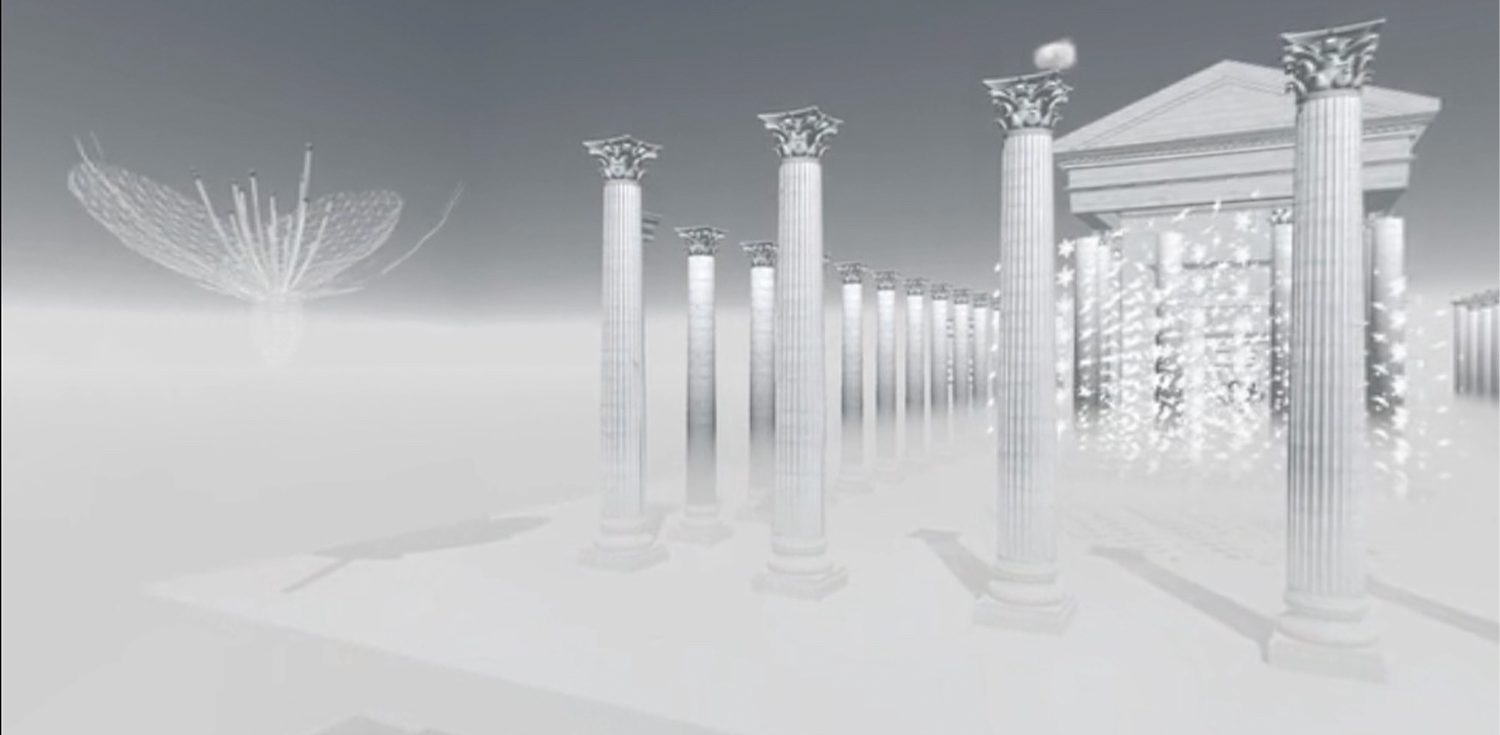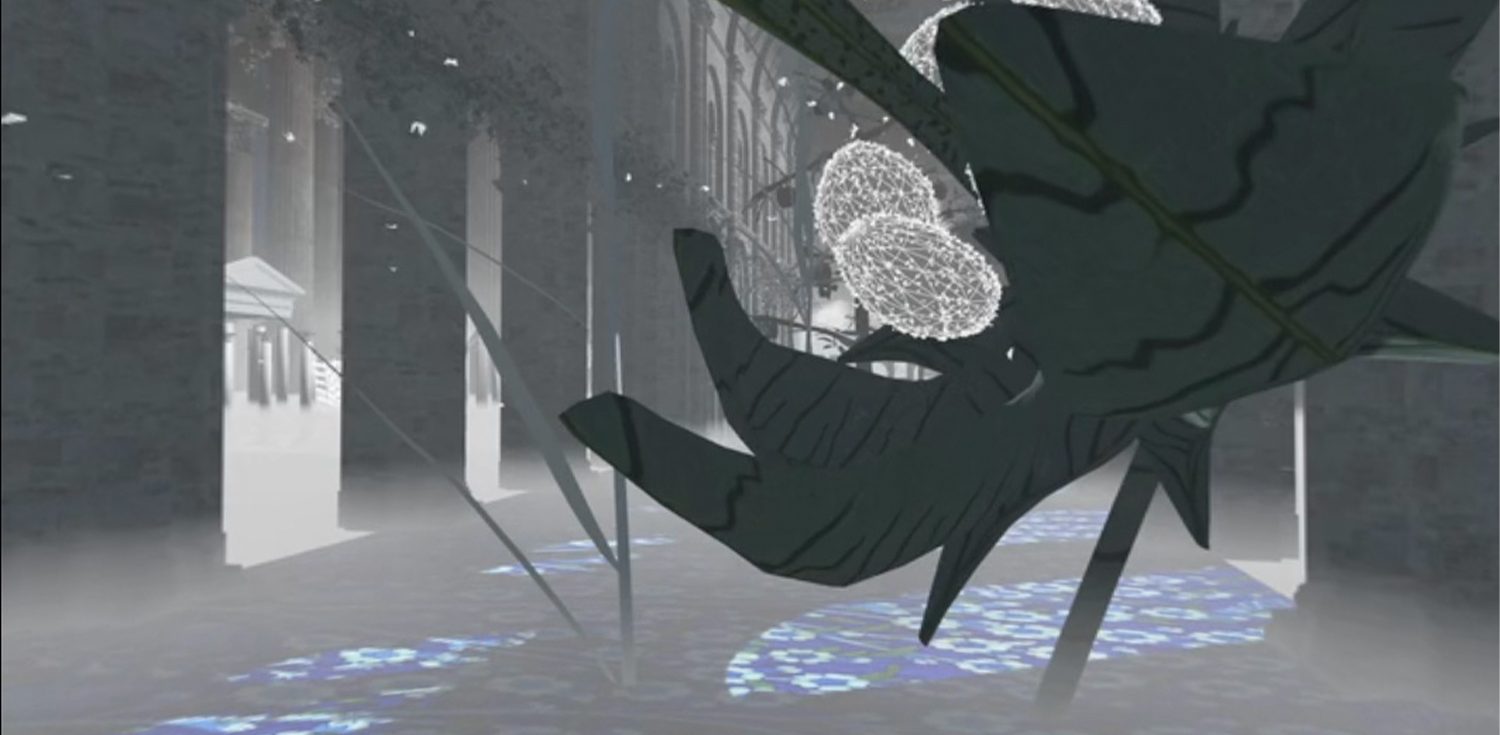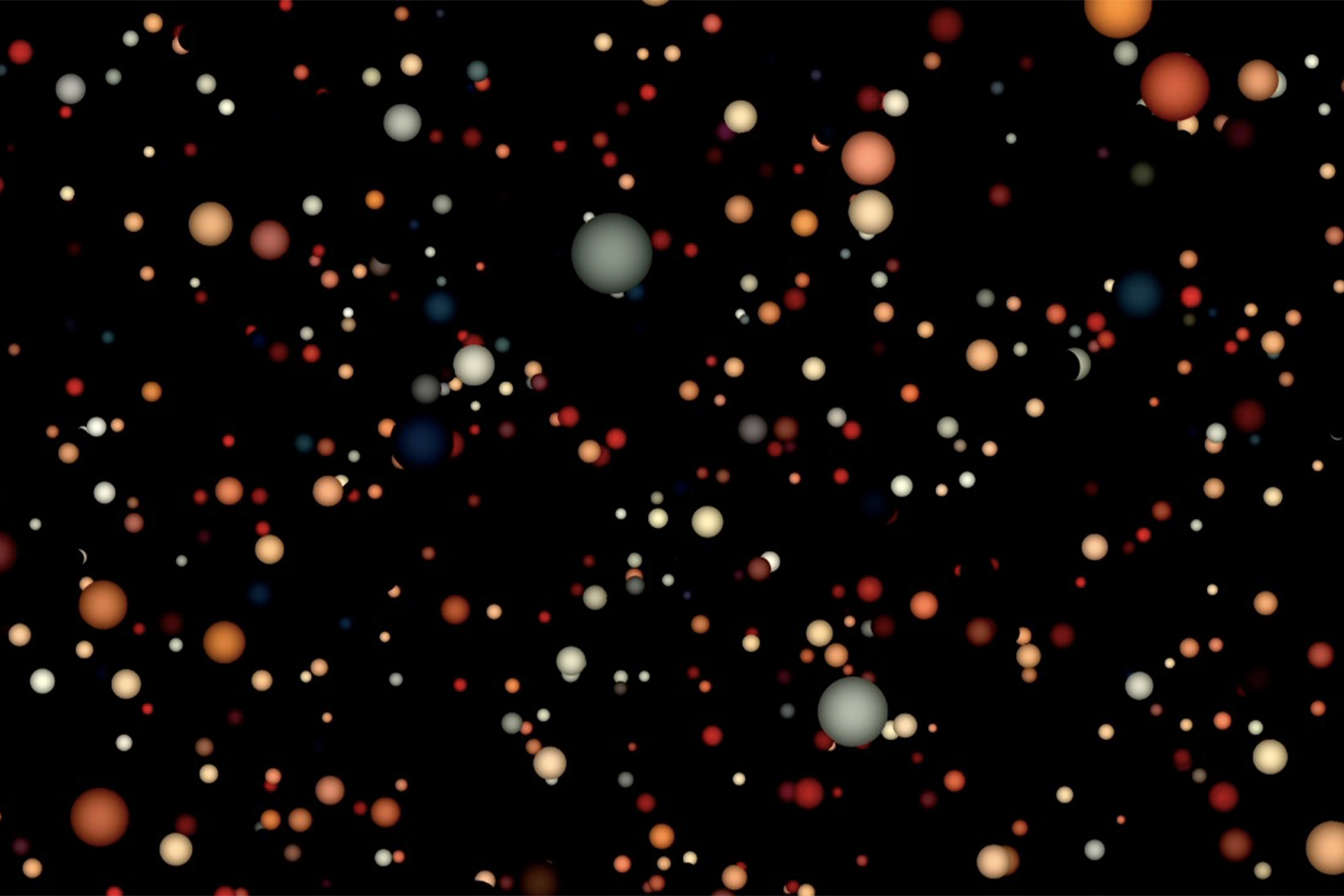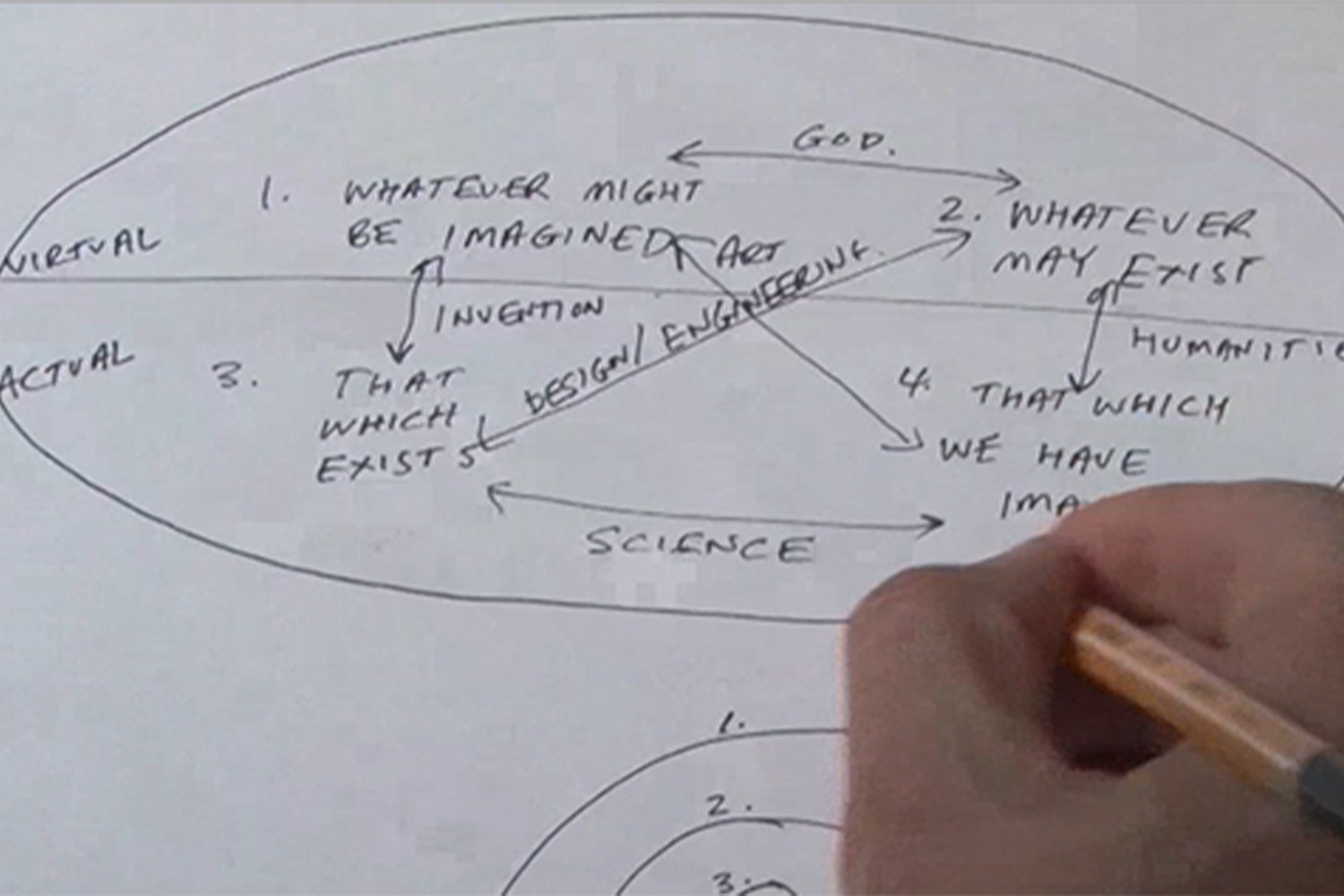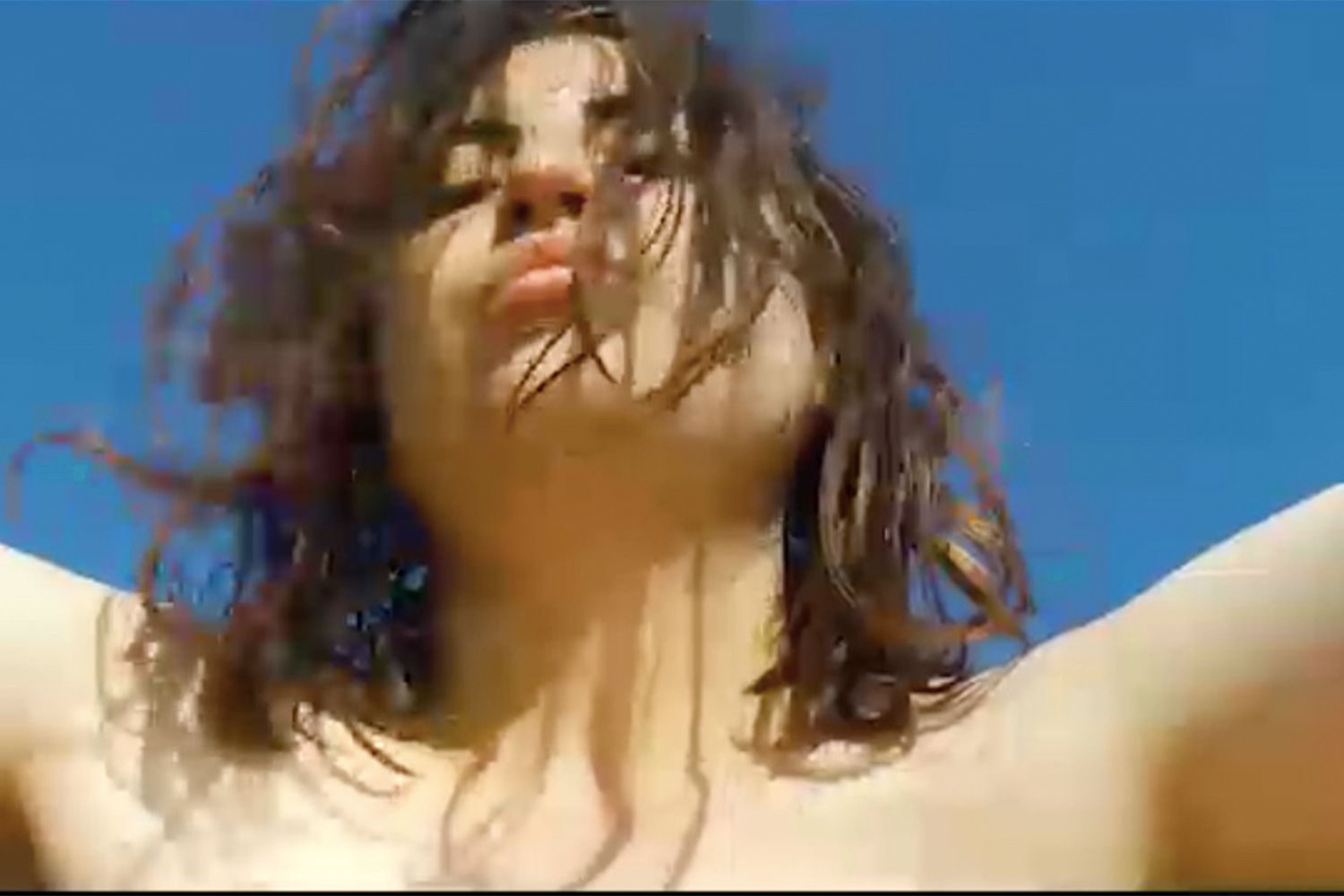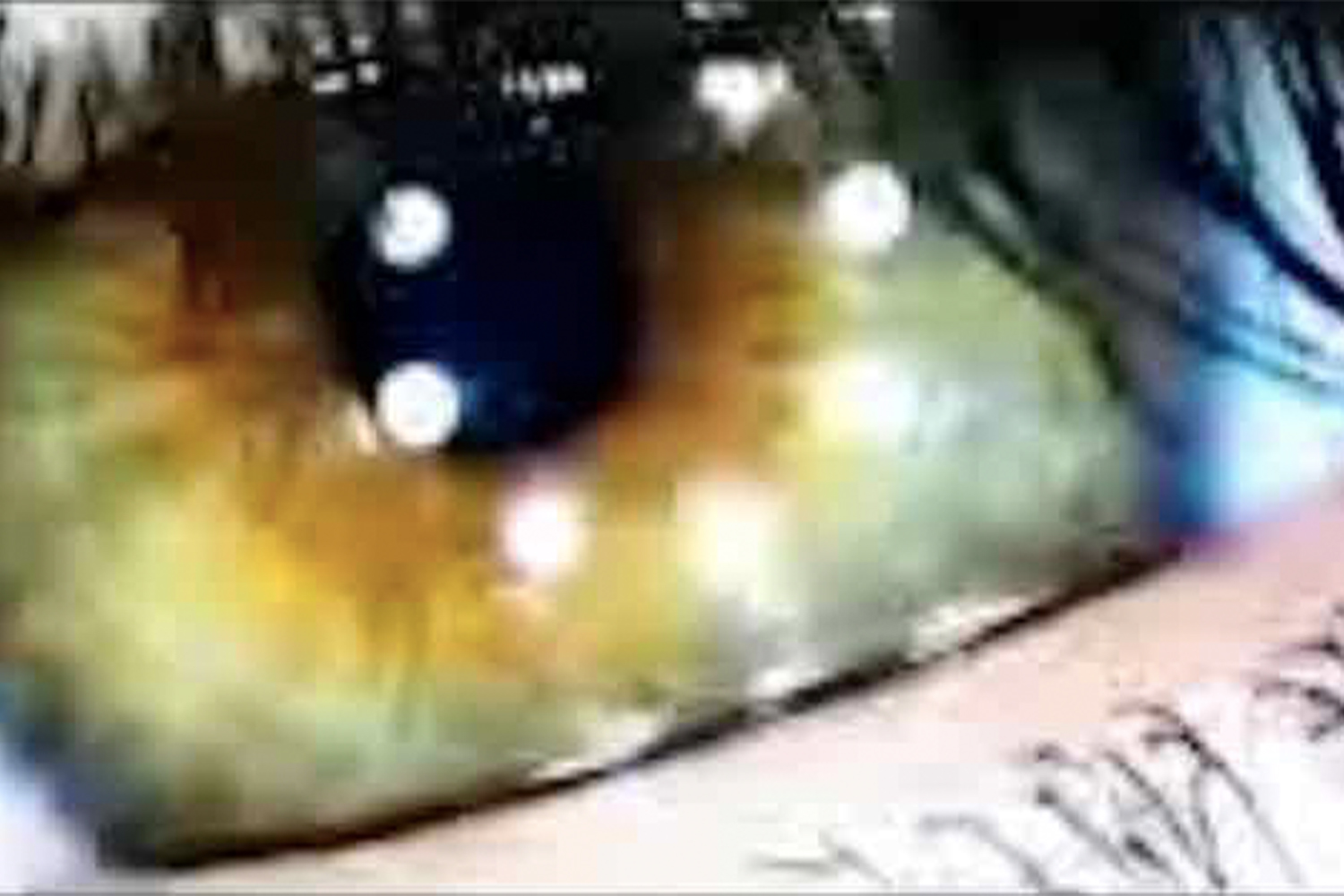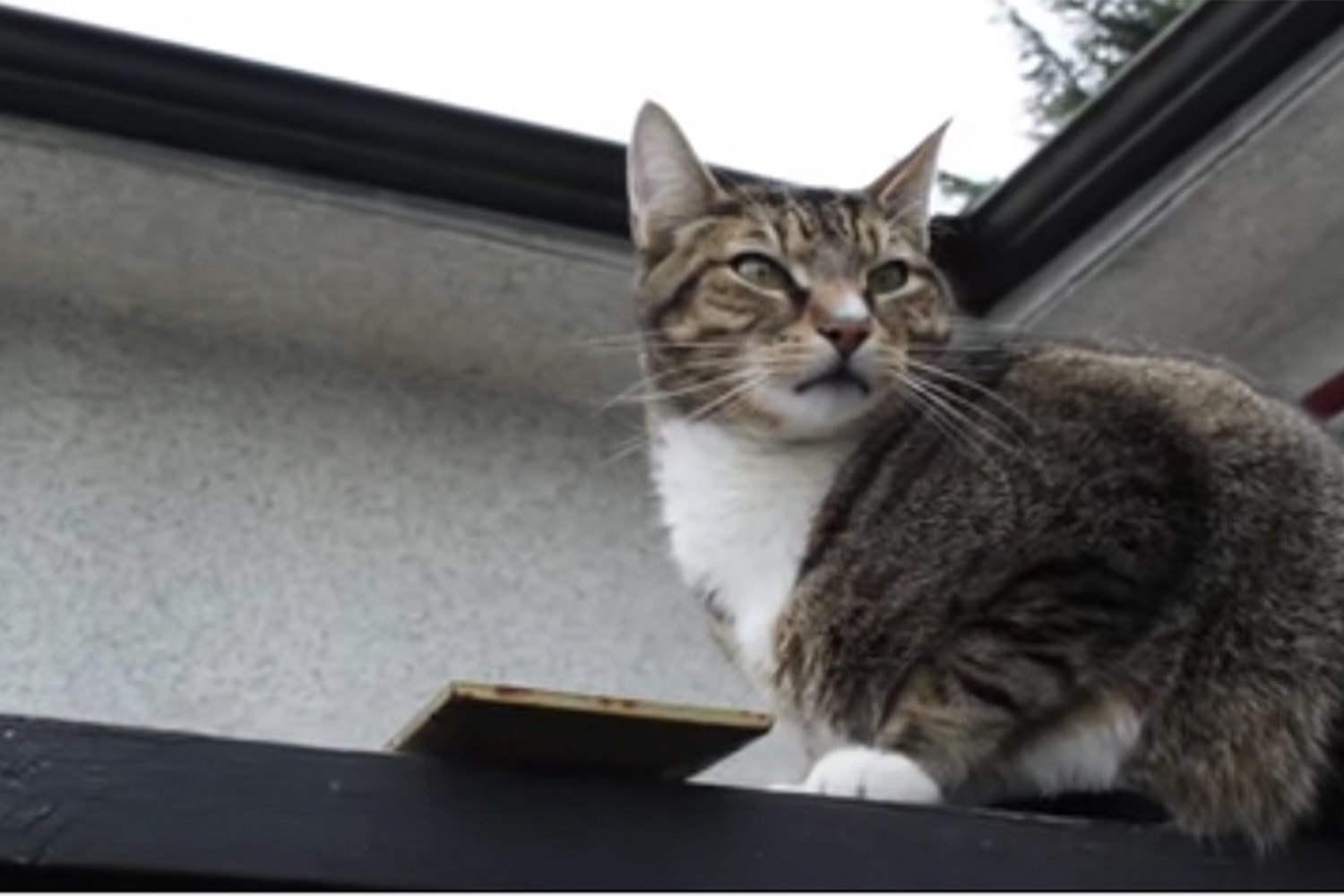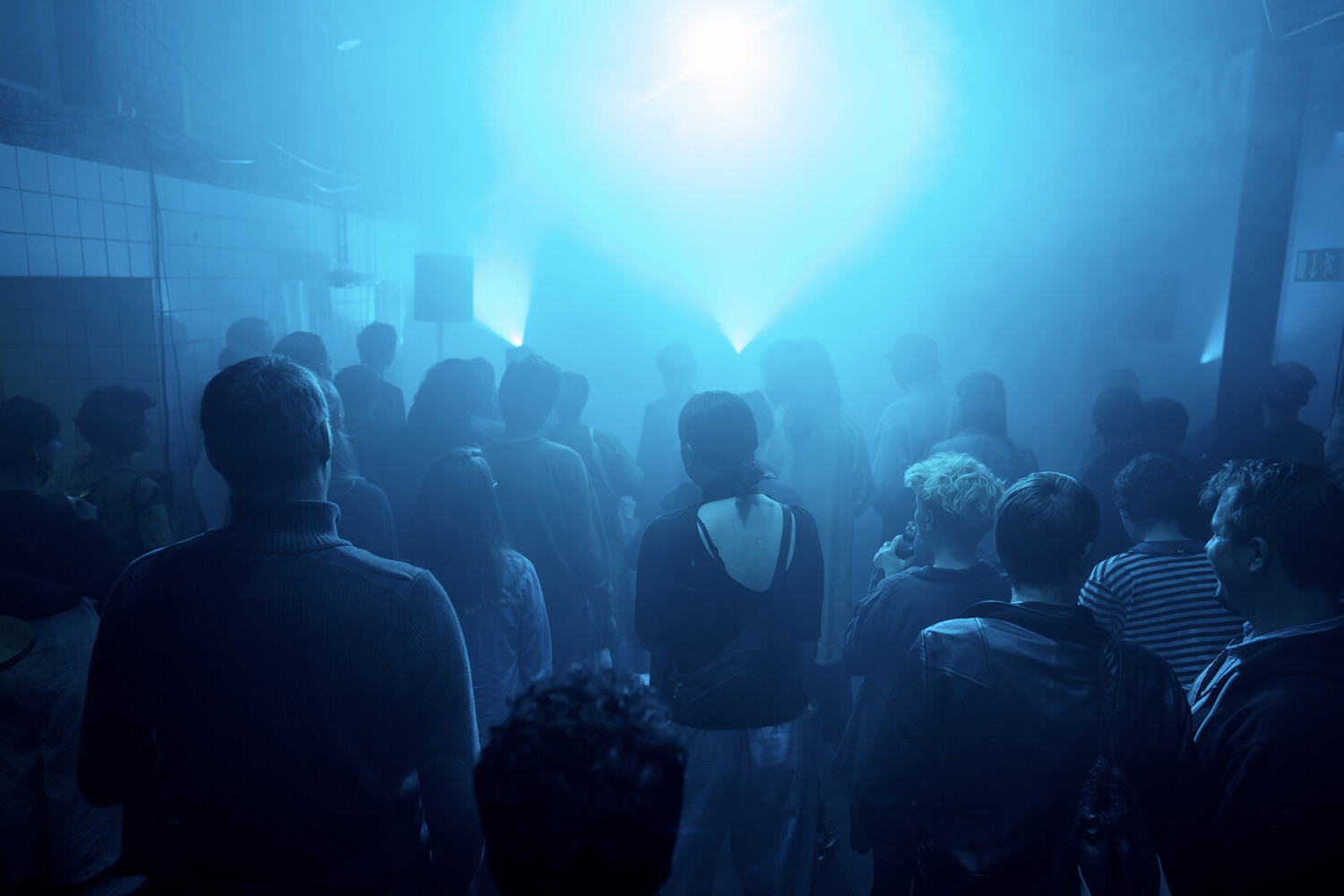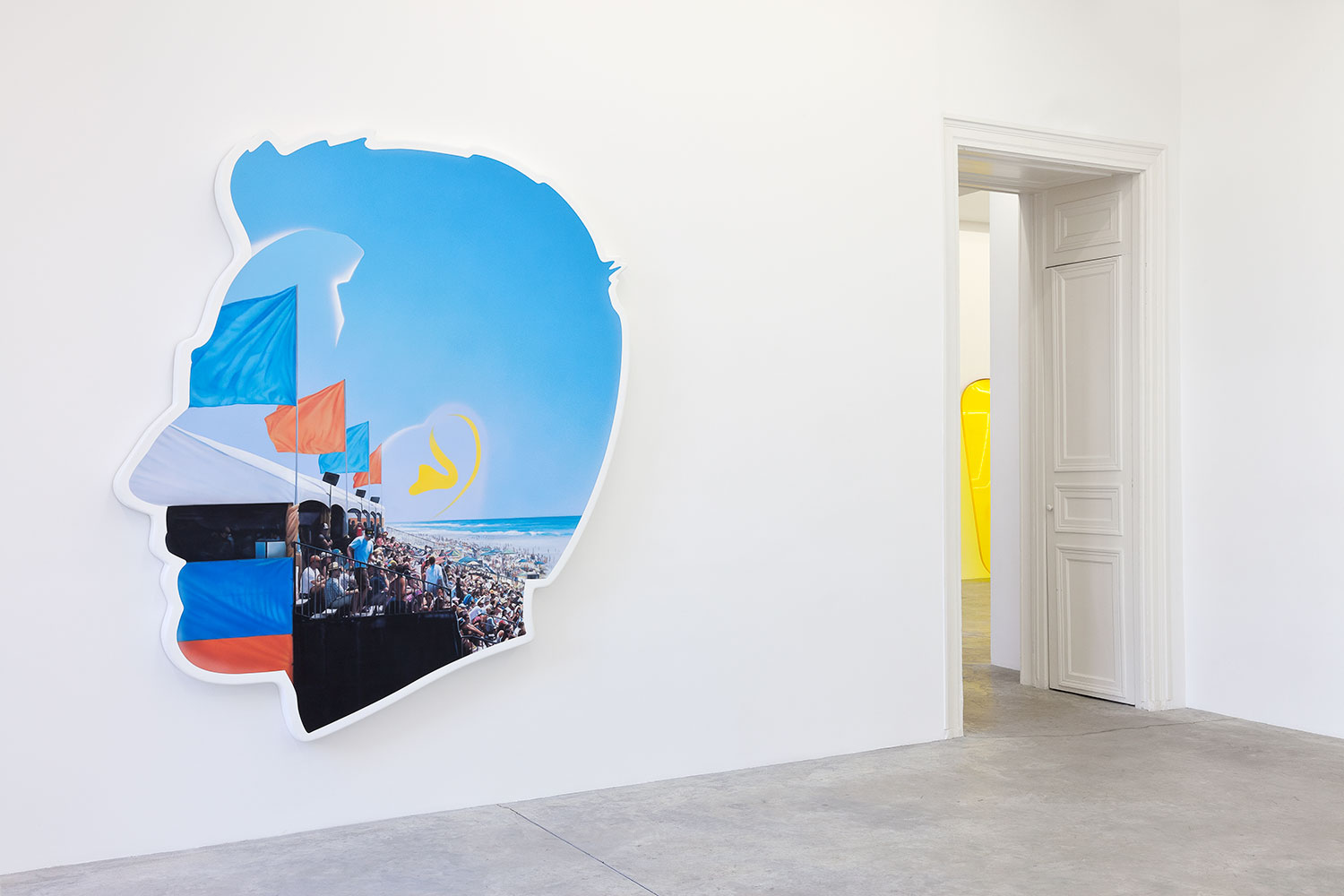“The Uncanny Valley” is Flash Art’s new digital column offering a window on the developing field of artificial intelligence and its relationship to contemporary art.
Jawa El Khash, The Upper Side of the Sky, 2019. Virtual reality. Courtesy of the artist.
Back in the late ’90s, Laura Marks introduced the concept of “haptic visuality” as a way of restoring vision as a form of touch, a notion that predates the mind-body split. Developing Deleuze and Guattari’s concept of “smooth space” — that which relies on tactile contact with its environment — she identified “an ancient and intercultural undercurrent of haptic visuality” as a way of restoring vision as “embodied and material.” Intercultural cinema is central to her work for the way it challenges the separateness of cultures by resituating its audience within smooth space. Her book Enfoldment and Infinity: An Islamic Genealogy of New Media Art (2010) established a new way to reconsider our present digitally filtered environment by looking through a pre-Enlightenment lens. Last year, in the midst of the COVID-19 pandemic, she inaugurated the first “Small File Media Festival” to celebrate sustainable filmmaking in solitary confinement. Following its second highly successful iteration, she spoke to Alex Estorick about how touch might survive the age of the metaverse.
Alex Estorick: You’ve recently proposed an aesthetics of enfolding and unfolding in which the image, information, and the infinite interact. Can you explain how this applies to contemporary new media art?
Laura U. Marks: First off, we can think of the universe as infinite, and also as densely folded together, all parts potentially in contact. But of course we don’t perceive more than a small portion of the universe: only little bits of it unfold to us at any given time. I call what gets unfolded the image. Information is the name I give to filters that selectively unfold some aspect of the universe, in many different ways that I call manners of unfolding. Its actions are usually imperceptible. Often information aligns with dominant manners of unfolding the universe; it’s ideological, unimaginative, or simply insulting. But we can triangulate between the image that we perceive and what we know about the information filter to learn more about the universe — things that are concealed by information. For example, Facebook’s algorithm is a crude and bossy filter, but users can triangulate between the images it shows them and the infinite world of friends and events beyond the filter to unfold more of that world.
For another example, let’s take the oasis of Palmyra, Syria, with its layers of Roman and other civilizations’ architectural remains, as our little piece of the infinite. After ISIS demolished much of Palmyra in 2015, the Institute for Digital Archaeology made a 3-D-printed replica of the Arch of Triumph from Palmyra using proprietary software. Displayed at Trafalgar Square and other places, the replica gives that woozy feeling of uncanny valley for which this series is titled. The software unfolds the destroyed monument in a bland and fetishistic way, as though reproducing its surfaces would assuage the pain of loss. In my view, though, the opaque interface actually makes the loss more acute. In contrast, Syrian-born artist Jawa El Khash made a VR of Palmyra using the open-source virtual reconstruction of the site, produced over several years by Syrian software engineer and Internet-rights activist Bassel Khartabil. Dreamlike, transparent, populated with butterflies, and sometimes revealing their wireframe construction, El Khash’s images unfold the infinite in a way that is both generous and accepts that loss can only be compensated by imagination.
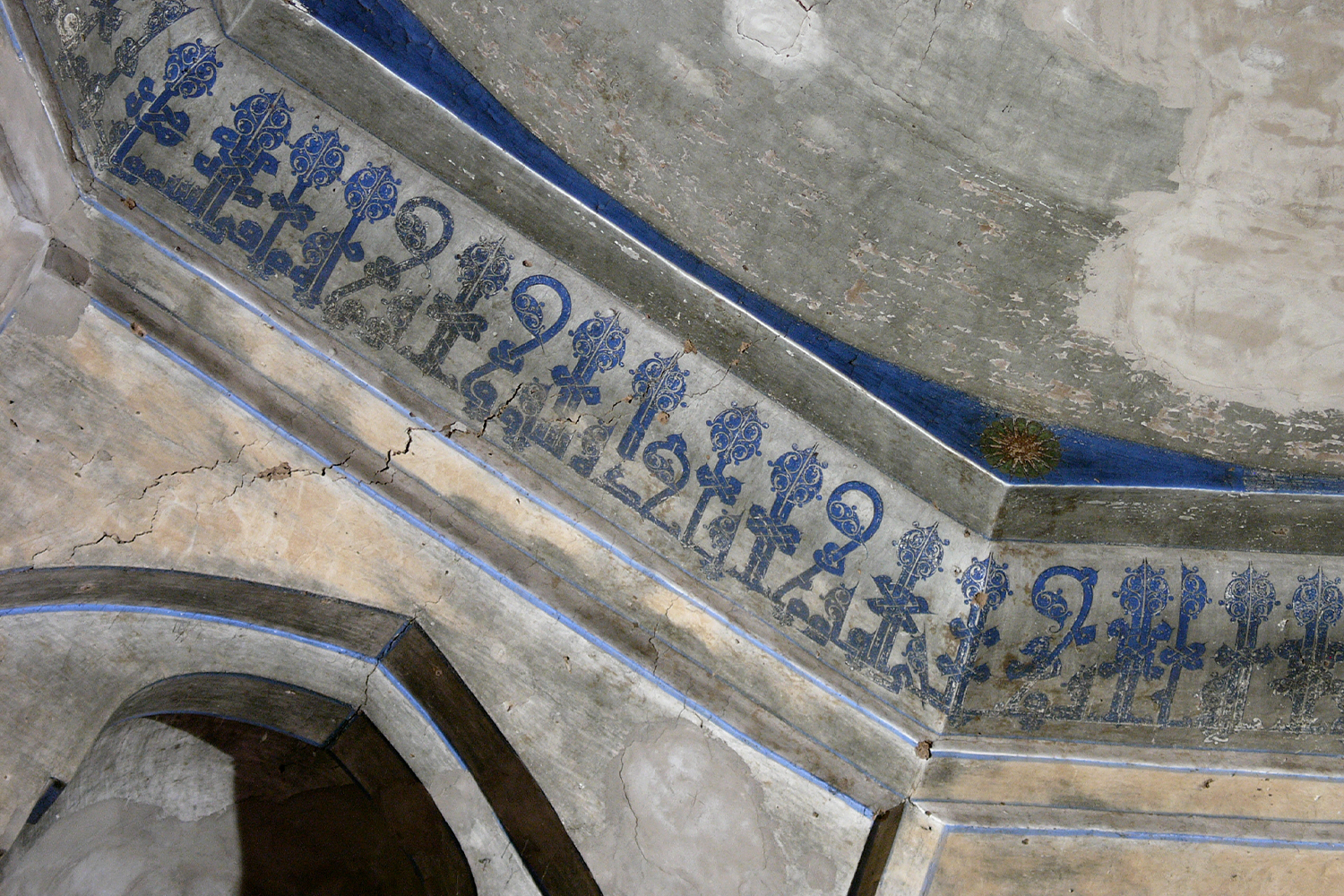
AE: Your book Enfoldment and Infinity (2010) collapsed time in order to trace the visual and philosophical similarities between classical Islamic art and contemporary new media. How can this kind of deep media genealogy illuminate our current state of cultural flatness and nostalgia?
LUM: The ideology of flatness is a great example of how dominant filters like YouTube pretend to make the infinity of events in the world accessible to all, yet in reality unfold only that infinitesimal portion of events that have been recorded on video and posted to the platform. In a second selective unfolding, YouTube’s algorithms recreate not the world of events but a world shaped by its own complex commercial interests. Yet history gives us myriad examples of more creative and stimulating manners of unfolding. Enfoldment and Infinity looks at some of these that arise within Islamic art, which includes many algorithmic practices. For example, radical aniconism, refusing to unfold the infinite at all; or an elastic oscillation between image and information, now collapsing, now enfolding. An example of the latter is the floriated and foliated writing decorating certain mosques, where plant life seems to erupt from the letters. I argue that all of these are precedents for contemporary computer-based algorithmic practices.
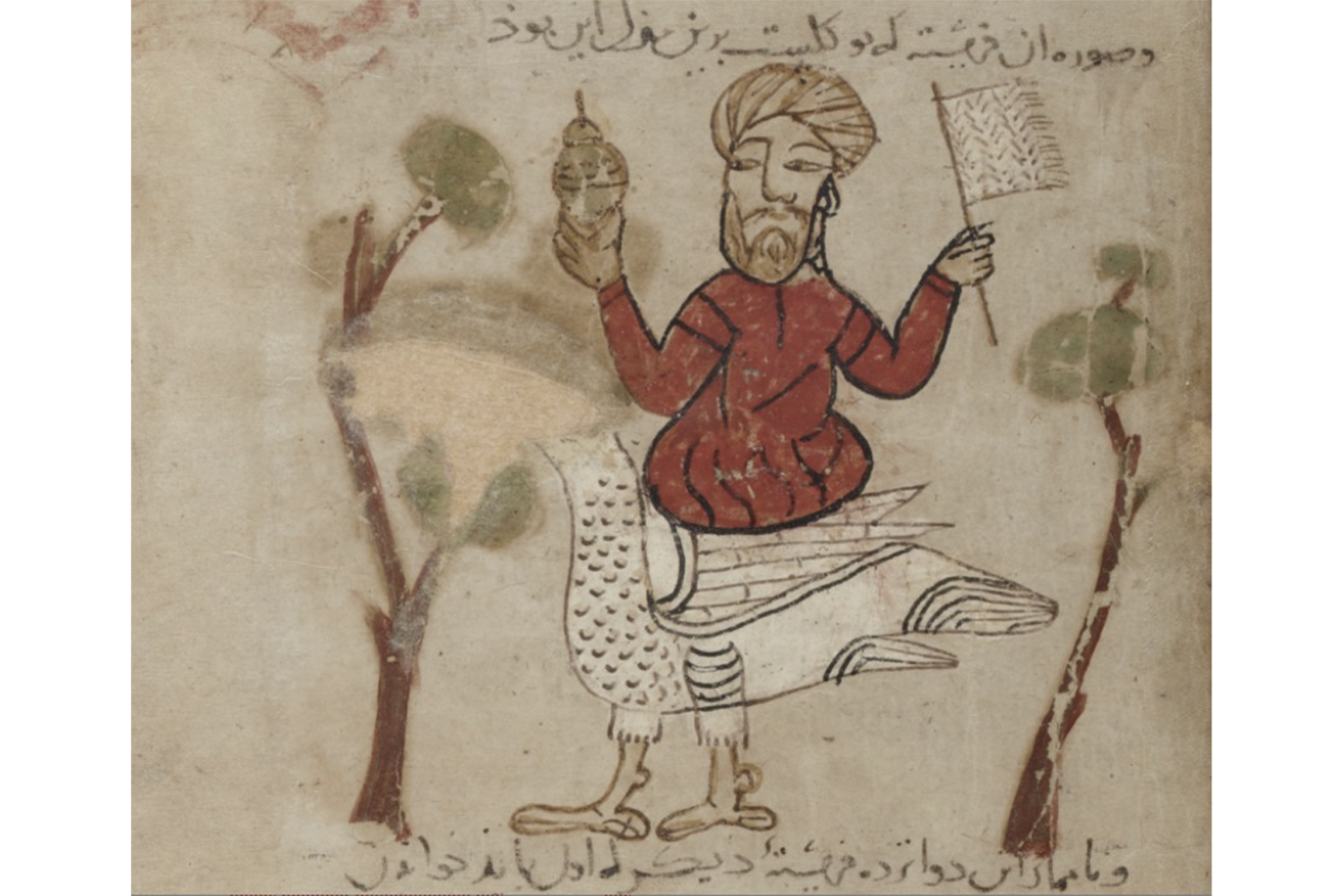
Recently I’ve been exploring another very fun media genealogy, the talisman: an interface through which magicians can make a fold in the cosmos by making themselves microcosms: aligning their bodies and technologies with cosmic powers. Talisman-images are at work today too, not in the workshops of Elon Musk but, for example, in environmental activism; Indigenous cultural traditions that cultivate the body as a microcosm of the universe; and artworks that affectively connect the cosmos to the body. An example is Steve Reinke’s video Rib Gets in the Way (2014), which I consider a documentary about the interconnected world for nonbelievers. Reinke gives an entirely profane image of the microcosm-macrocosm relationship, and because the movie works not at the level of thought but directly affects the viewer’s body — my whole body loosens up and I laugh to tears every time I see it — it connects us to the cosmos too. The larger point is that it’s much more instructive to take our minds off the narrowly imagined, corporately overdetermined near future and look to history, including non-Western history, in order to imagine what present-day media might do.
AE: You’ve advocated “haptic criticism” as a way to resensitize the human at a time when our sense of touch is being diminished by digital media. How can we maintain a haptic engagement with the world when we’re stuck in the metaverse?
LUM: Most people in the world don’t inhabit the metaverse nor ever will, and also, as I’ve been intimating, the metaverse is a mean and stingy thing compared to the infinite. Experience is already infinite, as simple exercises can demonstrate. Drawing close enough to something that you experience it with all your senses and your imagination, rather than with more instrumental kinds of perception — as in the contrast I posit between haptic and optical visuality — unfolds that thing to your body, and subsequently to feeling and thought.
Secondly, while the embodied effects of haptic images and haptic visuality continue to be important, I believe (and Marshall McLuhan long ago suggested) that networked media have other tactile qualities even when the images they circulate are optical or representational. Traveling images have performative power: they make contact, have real effects, and become more real the more they circulate. I think of images as connective tissue that builds links between far-flung people, links strengthened by desire. I compare haptic images and haptic networks in a chapter on Palestinian media art in my book Hanan Al Cinema: Affections for the Moving Image. Curator Bashir Makhoul and artist Larissa Sansour are among the Palestinians who argue that their nation is being built online. Interestingly, the subjective effects are similar to those of haptic images. Interacting in networks — especially in those that they feel personally connected to, like social-media sites — people are drawn so close that distinctions between subject and object break down. But at the same time, networked media are surveillant, as Palestinians know intimately well.
AE: It seems to me that there is a contest for the survival of knowledge between marginalized communities and technocapitalist science, which sees robotics as the way to a more “embodied” understanding of the world. Is it possible to unite ethics and prosthetics?
LUM: In principle, yes. Designers often develop new technologies with idealistic goals (though some of these seem quite silly or wrongheaded), but the vast majority of those well-intentioned technologies are subsequently deployed for means of profit taking and control. For a questionable example, robotic pets give comfort to people in nursing homes, so they suffer less from being ignored by their children — who are most likely too busy working to earn the money to pay for the nursing home — and by overworked staff. Whose interests does that serve? African-diaspora antihumanists such as Kodwo Eshun have observed that the Enlightenment notion of the human actually supported the kidnapping and enslavement of people deemed not to be human, so the sooner contemporary cyborgs can rid themselves of humanism’s “putrid corpses of petrified moralism,” the better! That deliverance, though, has to occur at the level of software, which as we know often has bias built in.
AE: The Small File Media Festival envisions a more sustainable micro-media ecosystem. How do you see this model being extended to a planetary scale? Perhaps this is where the blockchain comes in…
LUM: Yes indeed! Since streaming media is responsible for a surprising and fast-growing proportion of greenhouse gas emissions (information and communication technologies as a whole are currently calculated to produce 3% to 4% of GHG), and since decarbonization is not going to happen fast enough for us to meet the Paris Climate Agreement, it’s important for those of us in the over-infrastructured world to wean ourselves off streaming big files. The stunningly creative and surprisingly immersive movies that artists have been submitting to SFMF — micro-narratives, performative works, animations, executable files — show that cinematic pleasure can be intensive rather than extensive. Many small-file movies are haptic for that matter — not pushing out like hi-res movies, but drawing you in by your senses and your imagination. I love that small-file movies are haptic both formally, given the softness that usually results from compression, and in terms of the desiring networked image.
Our movement is going to consign large streaming files to the rubbish heap of unsustainable and inelegant bad habits. We’re inviting friends in other parts of the world to start their own small-file festivals. You asked whether the blockchain could carry small files, and I almost choked on my cashew-butter sandwich, since their ecological footprints are so utterly incommensurable. However, I rather like the idea of treating small-file works as the precious jewels they are, and NFT art is one way to do that. So if and only if a proof-of-stake consensus mechanism is established, which as we know consumes far less energy than the proof-of-work method, it could support unique small-file works whose owners could gloat over them in private. But honestly, these movies are small enough to travel by email or text message, so our goal is, rather, that they should become the norm for all streaming. Small-file Netflix! Small-file YouTube! Small-file FaceTime! Small-file Peloton! Small files everywhere that stimulate imaginations rather than CO2 emissions.

